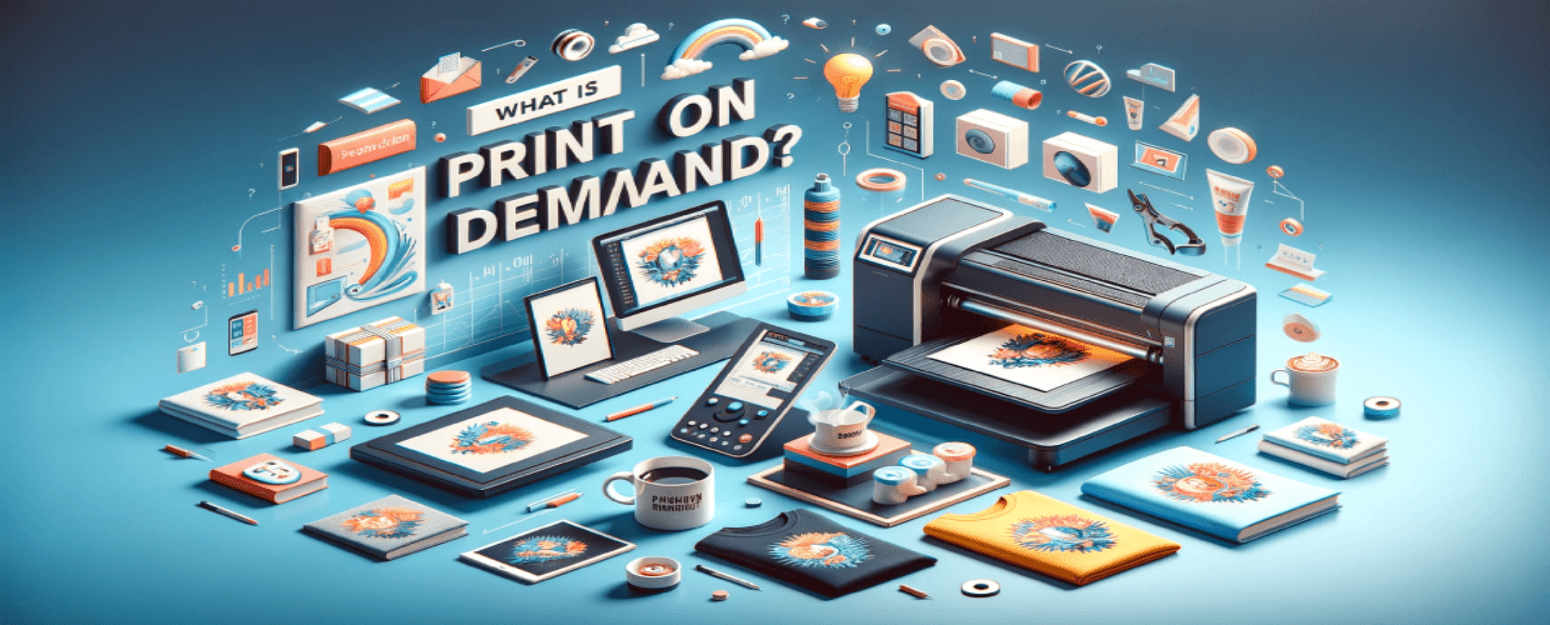Introduction
In today’s digital age, the traditional methods of printing and selling products are rapidly evolving. One innovative approach that has gained significant traction is Print On Demand (POD). But what exactly is Print On Demand, and how is it transforming the way we think about production and retail? This blog post delves into the world of POD, exploring its mechanisms, benefits, and its impact on creators and consumers alike.
What Is Print On Demand?
Print On Demand is a process where products are printed or created only after an order is received. Unlike traditional bulk manufacturing, POD allows for the production of single items or small quantities, tailored to individual orders. This model is most commonly used for products like books, clothing, accessories, and home decor.

How Does Print On Demand Work?
The Print On Demand process is straightforward yet efficient:
- Design Creation: Artists or designers create graphics or text designs.
- Product Listing: These designs are then listed on a POD platform or website, often integrated with an e-commerce store.
- Order Placement: When a customer orders a product, the POD service receives the order details.
- Printing and Production: The product is printed, manufactured, or customized as per the order.
- Shipping: The finished product is then shipped directly to the customer.
Benefits of Print On Demand
- Reduced Inventory Risk: Since products are made to order, there is no need for large inventories, reducing the risk of unsold stock.
- Cost-Effective: It eliminates the upfront costs of mass production, making it ideal for small businesses and independent artists.
- Customization: Offers the ability to personalize products, catering to customers looking for unique items.
- Eco-Friendly: Less waste is produced as items are only made when needed.
Challenges of Print On Demand
While advantageous, POD also has its challenges:
- Limited control over production quality and shipping times.
- Profit margins can be lower compared to bulk manufacturing.
- Dependency on the POD service provider for product quality and fulfillment.
The Future of Print On Demand
The future of Print On Demand looks promising, with advancements in printing technology and e-commerce. It opens doors for creative individuals to launch their brands with minimal investment. Moreover, as consumers become more conscious of waste and sustainability, the demand for customized, made-to-order products is likely to grow.
Conclusion
Print On Demand represents a significant shift in how products are created and sold. It empowers creators, reduces waste, and offers consumers unique products tailored to their preferences. As technology continues to evolve, we can expect POD to become an even more integral part of the global e-commerce landscape.


